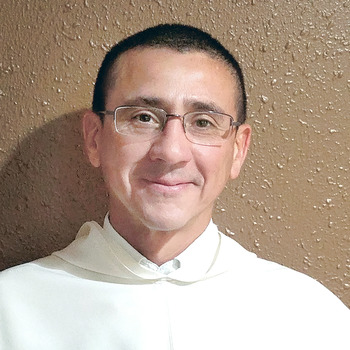
A platform that encourages healthy conversation, spiritual support, growth and fellowship

NOLACatholic Parenting Podcast
A natural progression of our weekly column in the Clarion Herald and blog

The best in Catholic news and inspiration - wherever you are!
‘This is my beloved Son, with whom I am well pleased; hear him’
-

By Father Manuel Solorzano
Hispanic Apostolate
Dear brothers and sisters, we have reached the Second Sunday of Lent, which focuses our attention on a high mountain we call Mount Tabor. We concern ourselves with facts and location, when it’s truly something much more symbolic. It is about divine manifestation containing all the elements of this literary genre: The mountain, the light, the white clothing, the voice in the sky.
In order to understand this text, it is necessary to place it in the context of Matthew’s Gospel: Shortly before the Transfiguration, Peter declared that Jesus is “the Christ, the Son of the Living God” while in the district of Caesarea Philippi. He is constituted as a “rock.” Immediately after, Jesus makes his first passion announcement and identifies the criteria for following him.
The apostles fail to comprehend, and Peter rebukes Jesus and says, “This shall never happen to You!” Jesus turns and says to Peter: “Get behind me, Satan!” Then Jesus says to his disciples, “If anyone would come after me, let him deny himself and take up his cross and follow me.”
It is necessary to reinforce the disciples’ faith. What we have come to know as the “Transfiguration” is more a transformation that Jesus’ followers, the apostles, must practice to later understand what would happen in his resurrection.
The setting must be a mountain, which is the location for the biblical encounter between man and God. Moses and Elijah, who are also men of the mountains, are as essential as Mount Sinai, the Ten Commandments and Mount Horeb. They are essential characters needed to comprehend Israel’s history.
In fact, some expected a new Moses and Elijah to become the “prophets par excellence.” The evangelist appears to have a clear idea about Jesus’ prophetic and messianic character. Jesus is the one the ancient prophecies speak of; he is the one who should be listened to. Everything is set for this profound encounter – the one who will transform our lives upon encountering the mystery. “His face shone like the sun, and his clothing became white as light. Peter said to Jesus, ‘Lord, it is good that we are here! If you wish, I will make three tents here, one for you, one for Moses and one for Elijah.’”
Peter shallowly understands, wanting to bask in the moment – to contemplate the light, to stare at the face of God – but he doesn’t realize that this will lead to Jesus’ mission on another mountain, Calvary. We cannot make three tents; we are on the way, making our way up and down, purifying, praying, uninstalling ourselves, following the desert of Lent, which will lead us to death and new life.
“This is my beloved Son, with whom I am well pleased; hear him.” That is the determining factor. While we may not fully understand Jesus’ words or signs, and difficult times with moments of darkness might approach, we must listen to him.
Lent’s 40 days are a time to meditate on the Word, to put yourself in his presence and to overcome the temptation of not giving up your life so that others may have life. It’s not just about spirituality. It’s about living a wide-eyed mystique, for which we must descend the mountain and plant our feet into the ground. “As they were coming down the mountain, Jesus commanded them: ‘Tell no one the vision, until the Son of Man rises again from the dead!’”
God continues to call us like he called Abraham in the first reading, so that we may leave our homes and this earth. In today’s second reading, Peter tells us that we have been called unto this life since before the world’s creation. It’s the reality of each day where we must seek the transfiguration of people and of society. We must ensure that hope is never lost so that our face, like Jesus’, reflects the face of God, who seeks that all men reach fulfillment.
Say yes to life and the world’s constant transformation. It waits for us outside, while inside our batteries are recharged to radiate light during the week.




